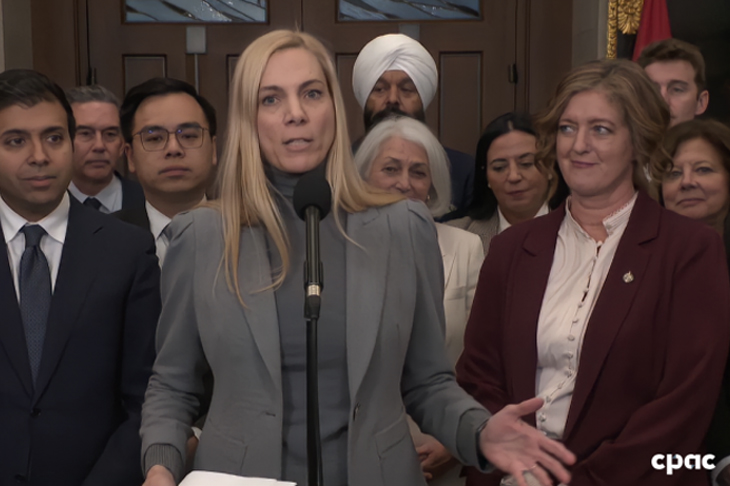IT’S BEEN MORE THAN 25 years since legislation guiding the communications sector came into force. There have some minor changes, but both the Telecommunications Act and the Broadcasting Act have remained largely the same – their objectives essentially left untouched. They have stood the test of time, some say. Others, however, point to the enormous impact of the Internet in arguing for big changes to these laws.
“The Internet has really become the central communication mode in our life now, and yet we have legislation that makes a distinction between telecom and broadcasting and also between wireless and wireline. It doesn’t make sense at all,” argues Konrad von Finckenstein, former chair of the CRTC and Commissioner of Competition. In an interview with Cartt.ca he explained the Internet has altered every single thing in the communications sector. Over the top digital TV services began under his tenure at the Commission and is now “the order of the day,” he said.
This hasn’t been lost on the federal government either. Prime Minister Justin Trudeau and his Liberal government, seemingly in touch with new realities affecting the telecommunications and broadcasting sectors, announced a review of both Acts in Budget 2017 (more HERE). However, perhaps not recognizing the significant impacts of technological change and consumers communications habits, the Liberals have yet to make public pronouncements on the review.
When contacted by Cartt.ca, Innovation, Science and Economic Development (ISED) noted in an email that broadcasting and telecommunications are rapidly involving sectors. It added that the government “wants to ensure that Canadians can continue to benefit from an open and innovative Internet, and that high-quality Canadian content continues to be produced and is accessible in an increasingly digital world.”
With respect to any further details, it appears the communications sector may have to wait for a while yet, with ISED saying “more details about the scope and process for the review will be announced in the coming months.”
It added that both ISED and the Department of Canadian Heritage “are sharing responsibilities for the review and are actively working together to design the structure, scope and establish terms of reference.”
Regarding specific areas of focus, ISED noted that net neutrality will be a guiding principle with the review examining “telecommunications, access to Canadian content and competition, and cultural diversity and Canadian content creation in the digital age.”
Reviewing the Telecommunications and Broadcasting Acts will be no small undertaking and it’s surprising that so little has happened since the 2017 Budget announcement. The rewrite will involve a massive amount of consultation with parties from all sides – network owners and service providers, application developers, academics, broadcasters of all ilks, actors, writers, directors, lawyers and experts as well as consumers. It could take a considerable amount of time, depending on how the government proceeds.
Part of that consultation has already begun with the government having ordered the CRTC to prepare a report on the broadcast distribution models of the future by June 2018. A considerable number of comments already submitted to the Commission process (more HERE) are pertinent. They largely focus on the impact that online digital content providers such as Netflix, Amazon, Spotify and others are having on the domestic broadcasting market.
In a nutshell, many parties argue that if online content providers are going to derive significant value from the Canadian marketplace (revenue in other words), then they should be contributing significant money to the development of Canadian programming, too.
As Rogers Communications noted in its comments to that proceeding, this “structural impediment” is preventing regulated Canadian broadcasting undertakings “from competitively responding to the actions” of the over-the-top (OTT) providers.
But the battle may be over whether conventional broadcasters and distributors should be treated the same as these online TV providers (less regulation and no Cancon commitments) or whether the Netflixes of the world should be subjected to the rules as they currently apply to BDUs (i.e. paying 5% of revenue to the Canada Media Fund as a new fangled cable company, or having to abide by serious Canadian content creation commitments as an OTT broadcaster). BCE has suggested that the CRTC “must roll-back certain areas of regulatory oversight” to set traditional broadcasting services on the same footing as new distribution models.
For Kirstine Stewart, a long-time senior broadcasting executive formerly with CBC/Radio-Canada and Alliance Atlantis, this is really about re-imagining the broadcasting sector.
“If they’re going to touch it, you either leave it as broad and as basic as possible when it comes to a Broadcasting Act. Or, if you’re going to touch it, then you have to make sure that you really do prepare it for the future and not just something for today." Kirstine Stewart, Tribal Scale
“If they’re going to touch it, you either leave it as broad and as basic as possible when it comes to a Broadcasting Act. Or, if you’re going to touch it, then you have to make sure that you really do prepare it for the future and not just something for today,” said Stewart, who is now president of Tribal Scale and an advisor at social media company Diply, in an interview with Cartt.ca.
The above is just one example of the many issues at play as the government looks to modernize the legislative frameworks that govern the country’s communications sector. There are many other considerations including whether the government should consider merging the two into one new Communications Act, how net neutrality fits in this new communications environment, whether competition law has a role to play and where, and is it time for the government to push a true universal service obligation on network operators?
While many parties that are expected to participate in the review process will have divergent views on the challenges ahead and how to solve them, it’s clear that the disruption caused by online broadcasters/distributors such as Netflix, Amazon and others has caused a blurring of the lines between telecommunications and broadcasting. That Netflix has captured considerable market share since launching in Canada (more than 5 million subscribers and now has the largest primetime viewership in virtually all age groups) also suggests that there is a sense of urgency to come to terms with the challenges that lie ahead for the Canadian broadcasting and telecom ecosystem.
As Greg Taylor, an assistant professor in the Department of Communications, Media and Film at the University of Calgary points out: zero-rated content is one prime example of the difficulty in determining what’s telecommunications and what’s broadcasting. Another: Is CBC/Radio-Canada’s new TV streaming app broadcasting or telecom? he asks.
“I think that things like zero-rated content on the Canadian system and whether or not that is telecom or broadcasting is only going to get more difficult (to separate) as things progress,” he told Cartt.ca.
This is Part I of a multi-article series on the issues, challenges and solutions to modernizing the Telecommunications and Broadcasting Acts.
In part two, next Wednesday, we dive into the question of whether or not merging the Broadcasting Act and Telecommunications Act is a good idea. This is the first of a seven-part series exploring the multitude of challenges faced by the federal government as it looks to alter the Acts.
If you wish to add your voice to this, please comment in the space below. If you have any additional ideas for us – or any other comments you’d like to make in confidence – please e-mail us in confidence at editorial@cartt.ca.
Original artwork by Paul Lachine, Chatham, Ont.









